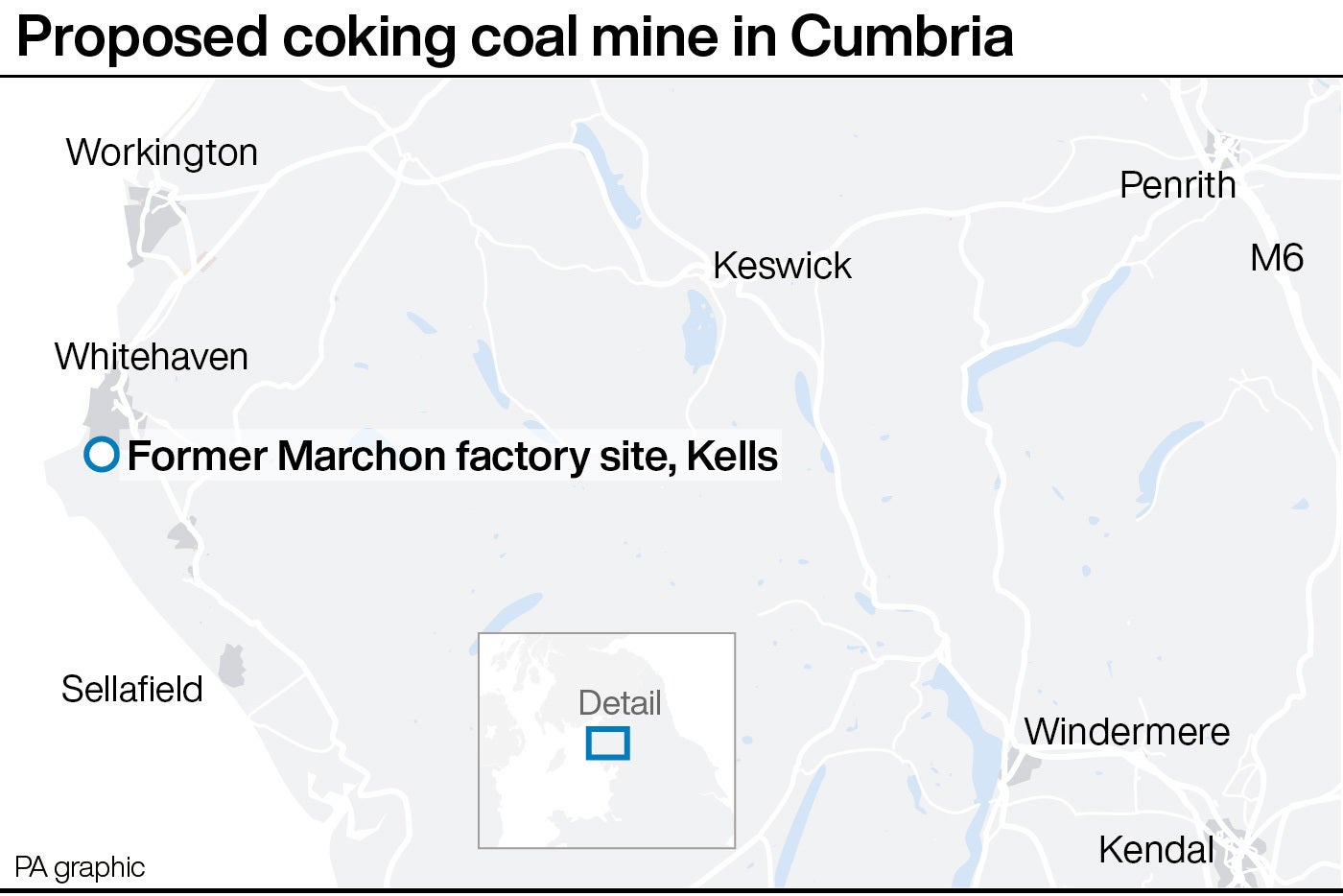Cumbria coal mine could produce emissions equivalent to 200,000 cars
Levelling Up Secretary Michael Gove is expected to announce whether the government will approve the coal mine imminently
A controversial new coal mine in Cumbria would produce the same emissions as 200,000 cars each year, new analysis has found.
The new mine would “blow a hole” in the UK’s target to reach net zero greenhouse gas emissions by 2050 and undermine its climate leadership just weeks after the Cop27 climate summit in Egypt, analysis by leading environmental think tank Green Alliance found.
Levelling Up Secretary Michael Gove is expected to announce whether the government will approve plans for the UK’s first deep coal mine in 30 years imminently, as the deadline of Thursday 8 December approaches.
The mine, on the edge of Whitehaven in Cumbria, is projected to increase UK greenhouse gas emissions by 0.4 million tonnes a year, according to the Climate Change Committee, the government’s independent advisers. That’s the equivalent of the emissions generated by around 200,000 cars or 170,000 homes.
The purpose of the mine is to supply coking coal used in steelmaking, and supporters say it will create jobs and be used to ease Britain’s reliance on foreign imports, which have a greater carbon footprint than using British coal.
Critics say demand for the coal from the UK steel industry has been put in doubt, point to the fact that 85 per cent of the coal is planned for export, and say the mine will undermine UK efforts to tackle climate change.
The government’s independent Climate Change Committee has advised that coking coal should only be used in steelmaking beyond 2035 if a “very high proportion” of the carbon emissions is captured and stored.
It has also warned that coking coal use in steelmaking may not even be necessary by 2035 due to the development of new technologies. The new mine would have planning permission up until 2049 – one year before the UK is legally obliged to meet net zero.
The deadline for a decision on whether to approve the new mine has been pushed back several times from early July to mid-August, to early November and now the 8 December deadline.

The most recent delay came just before the Cop27 climate summit in Sharm el-Sheikh, prompting speculation that a decision to greenlight the mine would have damaged the UK’s climate credentials on the world stage.
The deadline approaches as onshore wind caused a political storm in Westminster this week, with Rishi Sunak’s government confronted with a Conservative backbench rebellion in favour of relaxing an effective ban on wind turbines on land in England.
A recent YouGov poll for Green Alliance found that three times more people felt negative about opening new coal mines than positive.
“Approving the mine would be [a] backwards step for the UK’s climate ambitions when there is so much potential to create good jobs in green industries across Cumbria instead,” said Roz Bulleid, research director at Green Alliance.
The Independent has contacted the Department for Levelling Up, Housing & Communities for comment.
Join our commenting forum
Join thought-provoking conversations, follow other Independent readers and see their replies
Comments

Bookmark popover
Removed from bookmarks